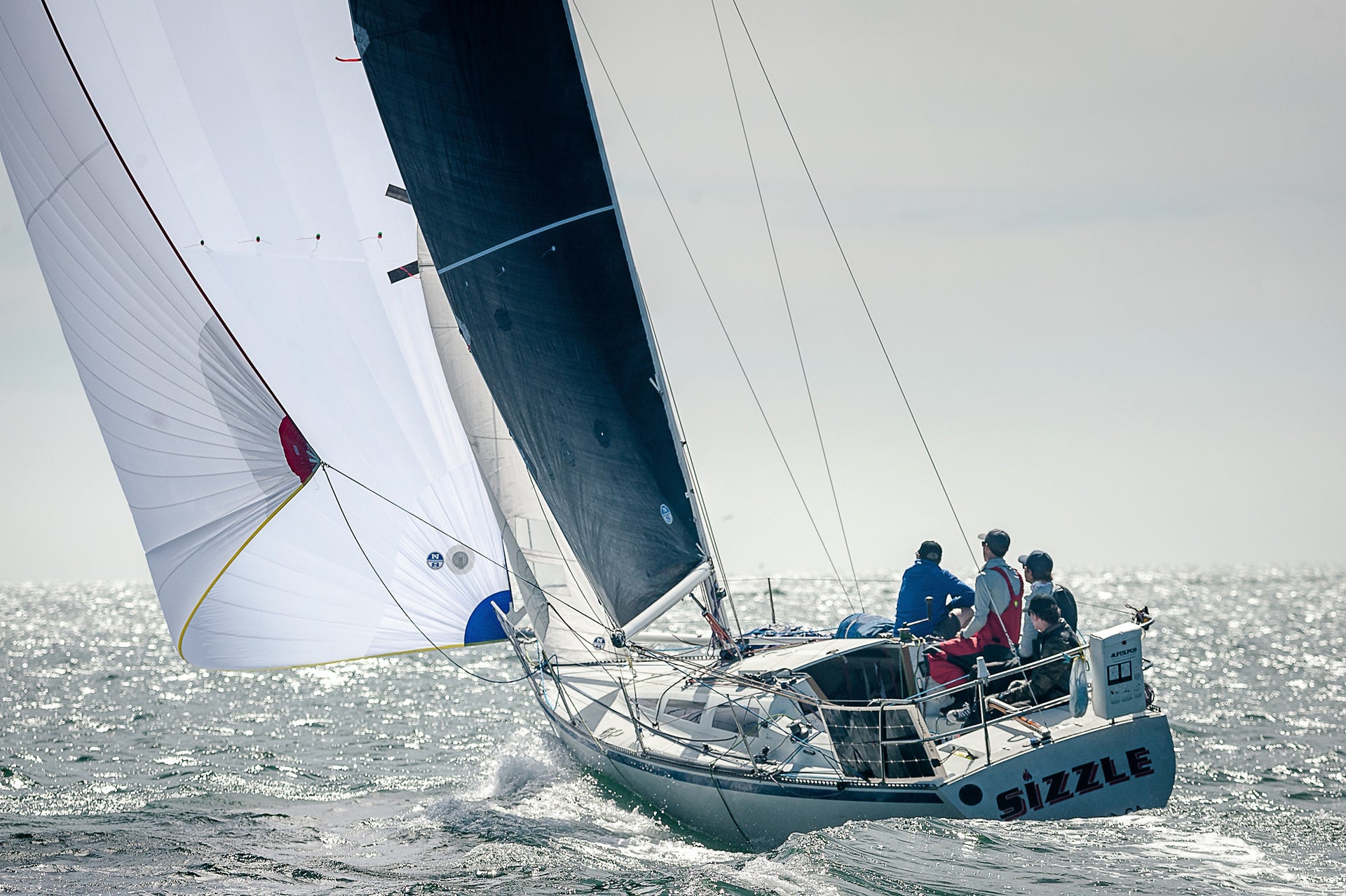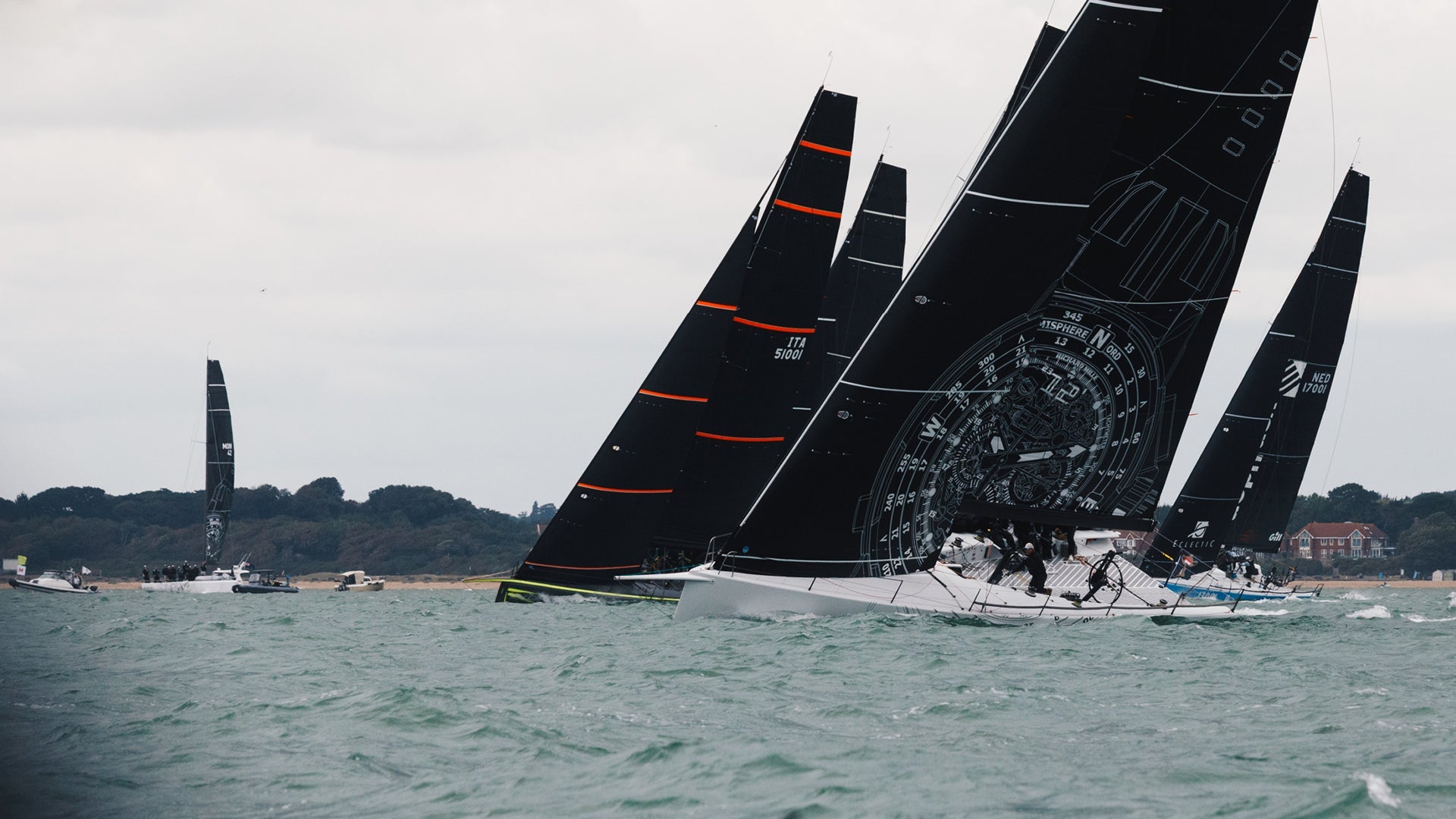SIZZLE WINS PUERTO VALLARTA
HOBIE 33 SIZZLE WINS PUERTO VALLARTA
Boat prep, Sail Selection, and Keeping an Eye on the Prize
 📸Mark Albertazzi / PV 2020
📸Mark Albertazzi / PV 2020The crew
Hardesty’s crew consisted of Bad Pak
Keeping an eye on the prize
Sizzle started the race on Thursday, in ORR-6. Conditions at the start were north-westerly offshore, and once the fleet cleared the bay, it was DDW from there. “We set the kite and sailed into the darkness, sailing as deep and as fast as we could,” Bill said. “We had originally planned to go between the islands, and we ended up not laying it, so we had to jibe. We lost a bit of distance, and the One Design 35 crossed us once, but once we jibed onto port, we got the boat going again and never saw them again.” “Sizzle was ahead on the tracker almost all the time,” said Patrick, who was following the race remotely from the Caribbean. “Everytime I downloaded their latest positioning, they were holding down the lead. I was amazed how long they were able to hold off the bigger boats. It’s really amazing for a Hobie 33! Everyone had high expectations for this team, and it was great to see them leading.” Bill commented, “We were pretty new to the systems on board, and I think that may have been to our advantage. Not having our tracker on kept us on our toes and not looking at the screen–it kept us working hard the whole time. We always assumed someone was outside, going faster, in better breeze–whether we could see them or not. We would jibe and catch a puff and ride that for a few hours; the crew worked hard the entire race.”
Once they got down to the Baja Peninsula, it got lighter and warmer. Bill sailed the shortest distance possible. “We pretty much stuck to the rhumb line from there until we got to Cabo. We did some sail changes to our light air sails–it was nice to have the options. Sea state was dead-flat, but that turned out to be in our favor. Once we built up our apparent wind, we were able to generate enough power to get her going fast and maintain speed with the waves.”
Bill commented, “We were pretty new to the systems on board, and I think that may have been to our advantage. Not having our tracker on kept us on our toes and not looking at the screen–it kept us working hard the whole time. We always assumed someone was outside, going faster, in better breeze–whether we could see them or not. We would jibe and catch a puff and ride that for a few hours; the crew worked hard the entire race.”
Once they got down to the Baja Peninsula, it got lighter and warmer. Bill sailed the shortest distance possible. “We pretty much stuck to the rhumb line from there until we got to Cabo. We did some sail changes to our light air sails–it was nice to have the options. Sea state was dead-flat, but that turned out to be in our favor. Once we built up our apparent wind, we were able to generate enough power to get her going fast and maintain speed with the waves.”
 Hobie 33 Sizzle sailing downwind with A2.5 + genoa staysail and 3Di RAW 360 mainsail. 📸Mark Albertazzi / PV 2020
Hobie 33 Sizzle sailing downwind with A2.5 + genoa staysail and 3Di RAW 360 mainsail. 📸Mark Albertazzi / PV 2020"Our mix of sail options, paired with the conditions we had was what we needed to perform our best."“We saw there was more wind coming down the Sea of Cortez,” said Bill, “and we just kept focusing on sailing as deep as we could. The wind appeared to be shifting left, so we got back on the rhumb line. The crew was on the rail for the tighter reaches in the morning, sailing 100 to 110 TWA (true wind angle). I can’t say the boat liked that, but once the waves kicked up and the breeze shifted aft, we were back DDW and could bring the pole back 165 degrees. We hit nine knots at one point. The boat sailed exceptionally well in those conditions.”
 📸Mark Albertazzi / PV 2020
📸Mark Albertazzi / PV 2020





